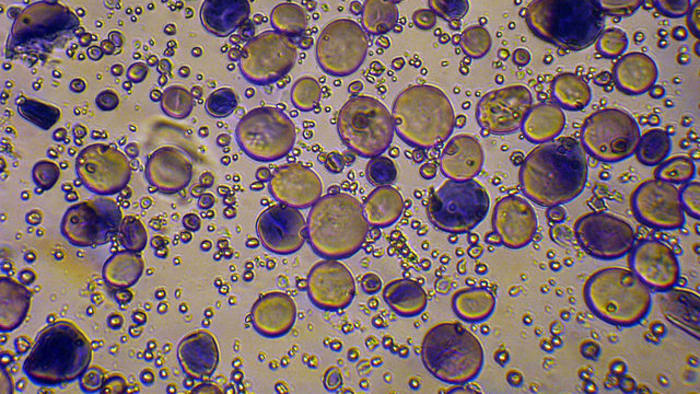Impressive experiments with iodine to show your kids
Easy experiments with iodine

The importance of iodine in human life
Iodine is an element that holds 53rd place in the periodic table. It is a non-radioactive non-metal. It is very important in human life. A lack of iodine in the body causes retardation in physical and mental development, and growth deficiencies. A deficit of iodine also causes hyperthyroidism. Although the iodine content in the organism is low, 25 mg, this does not make it any less important for the body. It also takes part in the metabolism process. The iodine in the body is mainly contained in the thyroid gland. So it is important to include additional iodine in our diet, especially in regions where there is a low iodine content in the water.
Iodine is also found in nature, for example in algae. It is also produced chemically through certain reactions.

A little history about the discovery of iodine
In discoveries, everything is always simple and accidental. The discovery of iodine can be blamed on a cat which knocked over solutions in flasks. One flask contained the remains of iodic salts treated with saltpeter, and the other contained sulfuric acid. The cat’s owner, the French chemist Bernard Courtois, noticed a violent reaction when these two components mixed, with the release of purple vapor. This was iodine. An element without which we could not imagine life.
Experiments with iodine
Iodine is a very good indicator, so any reaction with this element is very easy to observe. You can conduct a few experiments with your kids, as these experiments are very simple and educational. At school they don’t always find the time for such experiments. So you can easily carry them out at home and show the kids what an interesting science chemistry is. Click here to find out how to reveal fingerprints with the help of iodine Experiment “Find the starch”
With this experiment we can see what products contain iodine, and how much of it. You will need:
- 5% iodine solution;
- starch;
- pipette;
- disposable cup;
- products with and without starch.

First make an iodine solution. Even a child can do this. Take a cup, pour water into it and add a few drops of iodine. The solution is ready.
Now take different types of food and place them on a plate: bread, rolled oats, a raw potato, a boiled potato, a lemon, a radish, a carrot and a cucumber. Put several drops of iodine solution on them and see how they react with iodine. On the bread, oat meal, cheese and boiled potato, a reaction takes place, and the iodine turns blue. We draw the conclusion that these products contain starch. We also conclude that there is much starch in boiled potatoes, as the color is richer. But in radishes, lemons and cucumbers, we do not observe any starch. So by experiment, we clearly see the presence of iodine in different types of food.
Experiment “Interaction of starch with iodine”

To conduct this experiment, you will need:
- starch;
- 3 glasses;
- water;
- iodine.
Boil a paste from starch. Take 3 glasses and pour the paste into the 1st glass, starch with water into the 2nd, and just water into the third. Add several drops of iodine to each glass. See the result. In the first cup we observe a solution with a rich blue color, in the second a solution with a light blue color, and in the third a light brown color. We may conclude that the reaction took place more actively with the paste. Heat-treated starch gave a reaction more quickly.
Experiment “Discoloring iodine”
You can see the reaction of iodine and ascorbic acid For the experiment, take:
- iodine solution;
- 2 glasses;
- solution of ascorbic acid;
- water.
For the solution of ascorbic acid, you will need 20 pills and 60 ml of water. Pour iodine into the water containing starch. We get a rich blue color. Then mix the solution of ascorbic acid with the iodine solution. The solution instantly becomes colorless. We see some “magic”. The science of chemistry does miracles.
You can carry out these experiments together with your kids in your spare time. They will find them very interesting and memorable. Spend time with your children in a fun and educational way.